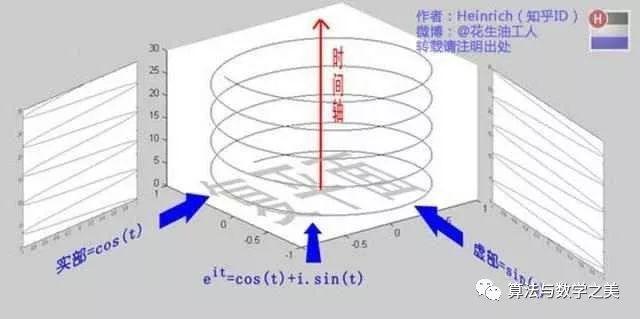Euler's formula is one of the most fascinating formulas in mathematics. It links together the most important constants in mathematics: two transcendental numbers: the base e of natural logarithms, and pi; two units: the imaginary unit The unit 1 of i and natural numbers, and the common 0 in mathematics.

And it has also had a wide-ranging impact on the creation of the field of mathematics, such as trigonometric functions, Fourier series, Taylor series, probability theory, group theory, etc., all have her shadows. Therefore, mathematicians evaluate it as "a formula created by God, we can only see it but cannot fully understand it".
Moreover, this formula has a great impact on physics, such as mechanical wave theory, electromagnetism, wave optics, quantum mechanics, etc. crawling at her feet; no wonder physicist Chad Feynman exclaimed: Euler's identity is not only "mathematics The most wonderful formula" is also the quantitative root of modern physics, because she succinctly connects the five most basic mathematical constants, and also combines circular motion, simple harmonic vibration, mechanical waves, electromagnetic waves, and probability in physics. Bo et al linked together...

Euler's identity is:

where e is the base of the natural exponent, i is the imaginary unit, and π is pi. This identity first appeared in Euler's book Introduction published in Lausanne in 1748. It is a special case of Euler's formula in complex analysis. For any real number x, we have

If x=π is substituted into the above formula, Euler's identity can be obtained. In Euler's formula, the imaginary number i occupies a special position. To understand this formula, you need to start with i: the imaginary number i has been touched by everyone in high school, but at that time we only knew that it was the square root of -1, but its real meaning is What? Here is a number line, and on the number line there is a red line segment whose length is 1. When it is multiplied by 3, its length changes and becomes the blue line segment 3, and when it is multiplied by -1, it becomes the green line segment, or the line segment around the origin on the number axis Rotated 180 degrees.

We know that multiplying -1 is actually equivalent to multiplying i twice, because i×i=-1, so that the line segment is rotated 180 degrees, so what about multiplying i once? The answer is simple: rotated 90 degrees.

If we put this operation on the coordinate plane to express, then the real axis and the imaginary axis constitute a set of symmetrical line segments, and then we insert an axis perpendicular to this line segment at 0, thus forming a plane, which we call It is the plane of complex numbers; on this plane, we can see that the function of the imaginary number i is to rotate.

For Euler's formula

The significance of this formula in the field of mathematics is much greater than that of Fourier analysis. When x=π, then there is

Its physical meaning for describing circular motion is that the displacement of the center of the circle is 0, as shown in the figure below:

The key function of this formula is to unify the sine wave into a simple exponential form. Let's take a look at its meaning on the image:

It can be seen that what Euler's formula describes is just a point that moves in a circle on the complex plane. As time changes, this point becomes a spiral line on the time axis. If you only look at its real number part, that is, the projection of the spiral on the left side is a basic cosine function, while the right side projection is a sine function.

Modern physics tells us that the composition of the macrocosm is essentially rotating, with circular motion and spin; the microcosm is also rotating, with circular motion and spin, and the core of Euler's formula description is rotation and frequency, therefore, in the quantitative sense of physics, it is no exaggeration to call it the first formula of the universe!
—END—
Original: Euler's formula - one of the most fascinating formulas - RFASK radio frequency question
Questions about RFASK
RF Questions is a technical question-and-answer learning platform upgraded on the basis of the "Microwave RF Network" series of original technology columns. It mainly focuses on RF chips, microwave circuits, antennas, radars, satellites and other related technical fields. , antennas, radar and other industries, providing high-quality, original technical questions and answers, column articles, RF courses and other learning content. For more information, please visit: RFASK RF Questions - RF Technology R&D Service Platform | Technical Questions and Answers, Column Articles, RF Courses